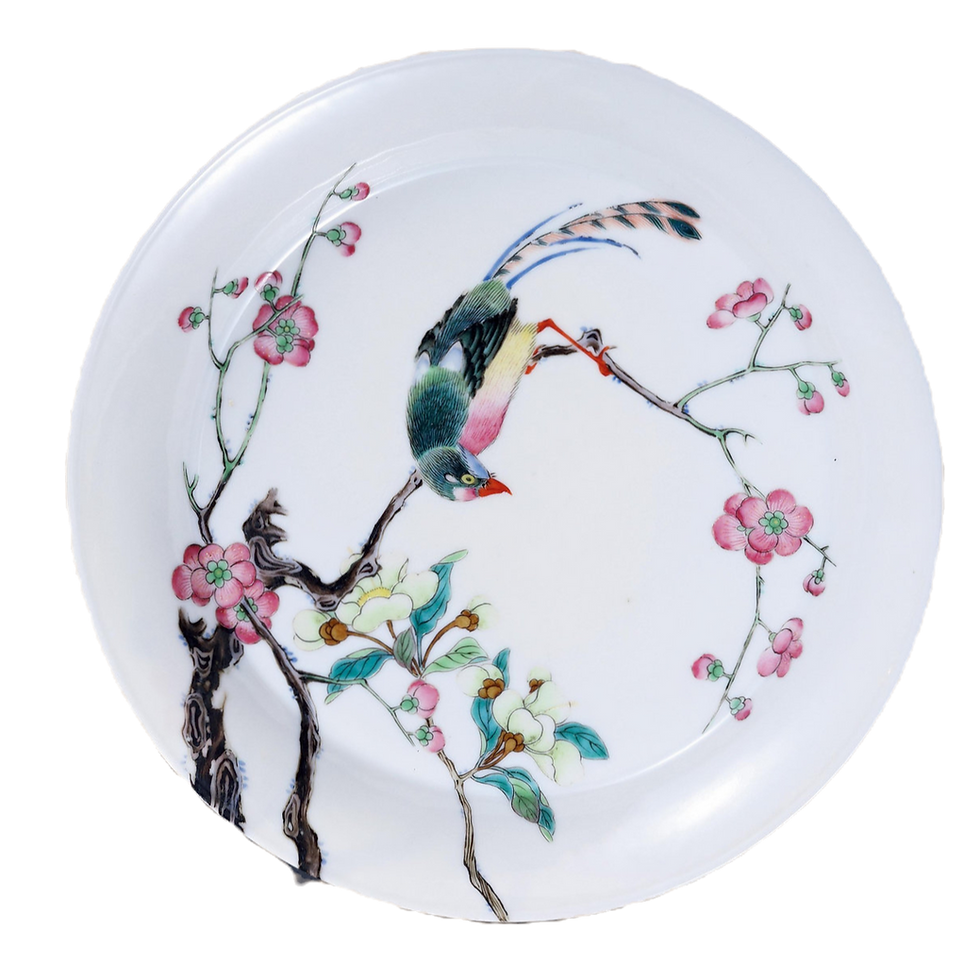The Double-Faced Ivory: A 16th Century Masterpiece in a Modern Inheritance
- Philippe Smolarski
- May 21
- 4 min read
This blog post was originally written for a client who recently inherited family antiquities, including several memento mori artworks she found disturbing. With her permission, I'm sharing our discussion to help others understand this important artistic tradition.
Yesterday, I met a young lady from an old family who recently inherited a manor not far from Paris. Our conversation began with what I can only describe as a "réquisitoire" – a litany of complaints about her inheritance. She has decided to sell all the "old things" that she professes to hate: the furniture is too dark, the paintings are boring, the old books are in Latin (and she reads only online), the Chinese porcelain is "kitsch," and the silverware is "ugly with dark spots."
As she showed me pictures of the ancestral paintings she doesn't want to keep ("I don't know them," she declared), she suddenly pronounced that her grandfather was "probably sick and pervert." Her evidence? She displayed photos of several beautiful Memento Mori pieces he kept on his desk. Among them was an exquisite ivory sculpture with two faces – on one side a beautiful young lady, on the other side a skull with decaying flesh and worms – likely a masterful work from the 16th century. There were also still life paintings featuring rotten fruits and hourglasses, among other pieces.
"Who would want to have that at home?" she asked dismissively. "He was sick. It's disgusting."
While I understand that not everyone appreciates antiques and many prefer contemporary art (which is perfectly fine), I will be visiting the manor next week to appraise all the belongings. I've decided to explain through this blog, which she reads, what exactly a Memento Mori is – and why her grandfather's collection represents not perversion, but a profound artistic tradition.
The Philosophy Behind Memento Mori
Memento mori—Latin for "remember that you will die"—is far from morbid obsession. These artworks serve as contemplative reminders of our mortality, encouraging viewers to consider the transience of earthly pleasures and achievements. The tradition emerged from philosophical and religious practices dating back to ancient Rome, when victorious generals would allegedly have slaves whisper "Remember, you are mortal" during triumph parades to temper their pride.
The concept gained tremendous momentum during the Middle Ages and Renaissance as Christianity emphasized preparation for the afterlife. Far from being "sick" or "perverted," people who collected and displayed such works were often considered especially thoughtful, spiritual, and philosophically minded.
The Double-Faced Ivory: A Renaissance Masterpiece
The ivory sculpture described—showing both youth and decay—is a classic example of a "memento mori" object known as a "vanitas." These double-faced carvings were particularly prized during the 16th and 17th centuries, owned by aristocrats, scholars, and clergy alike. Rather than representing morbid fascination, they embodied a sophisticated philosophical outlook: beauty and youth are temporary, and wisdom comes from recognizing our inevitable mortality.
These pieces were often exquisitely crafted personal objects meant for contemplation. The juxtaposition of beauty and decay wasn't meant to disgust but to inspire reflection on the transient nature of physical beauty and earthly achievements. The craftsmanship required to create such detailed works in ivory made them expensive collector's items for the educated elite—precisely the kind of family heirloom passed down through generations.
Notable Examples Through Art History
Your grandfather's collection places him in distinguished company. Throughout history, the greatest artists and their patrons embraced this theme:
Hans Holbein's "The Ambassadors" (1533)
This famous portrait of two accomplished French ambassadors features a distorted skull visible only from a specific angle. The painting celebrates worldly achievements while subtly reminding viewers of death's inevitability.
Philippe de Champaigne's "Still Life with a Skull" (c. 1671)
This composition presents just three objects: a tulip, an hourglass, and a skull—representing beauty's transience, time's passage, and life's end. Such paintings hung in the finest homes throughout Europe.
Caravaggio "Basket of Fruit" (C. 1596)
The still lifes with rotting fruit and hourglasses in your grandfather's collection follow this tradition. These weren't considered repulsive but were prized for their technical virtuosity and spiritual depth.
Beyond Morbidity: The True Meaning
What might appear macabre to modern eyes carried profound meaning throughout history. These artworks reminded people to:
Live virtuously, knowing life is brief
Appreciate beauty and pleasure while recognizing their impermanence
Consider what truly matters beyond material possessions
Prepare spiritually for what comes after life
A Heritage Worth Understanding
The items your grandfather collected represent not only valuable antiques but also connect your family to centuries of philosophical thought. The ivory memento mori alone, if authentic from the 16th century, may be a museum-quality piece worth considerable sums to collectors who understand its significance.
More importantly, these pieces reveal something about your grandfather: he was likely a thoughtful individual engaged with profound questions about life's meaning and legacy—precisely the kind of contemplation that leads people to care about family heritage and passing down meaningful objects through generations.
A Personal Note
I understand the desire for modern surroundings, but before dismissing these pieces as "disgusting" or evidence of something disturbing, I would encourage you to consider their actual meaning and historical significance. Many contemporary collectors and museums actively seek such pieces for their artistic merit, historical importance, and philosophical depth.
When I visit next week to appraise the collection, I'd be happy to share more about each piece's significance and value. What appears dark or morbid at first glance often reveals itself, with understanding, to be profound and even beautiful in its intention.
Perhaps some of these memento mori pieces might be worth reconsidering—not necessarily to keep in your home if they don't suit your taste, but to understand as part of your family's intellectual heritage before they pass to new caretakers who will value them for what they truly represent: not sickness, but wisdom; not perversion, but perspective on what ultimately matters in a fleeting life.
After all, the tradition of memento mori doesn't ask us to obsess over death—it invites us to truly live while remembering that our time to do so is precious and limited.
I'd like to sincerely thank you for allowing me to write about our conversation on this blog. Sharing these reflections publicly may help others who encounter similar pieces understand their profound significance rather than dismissing them at first glance. I look forward to our appointment next week and continuing our discussion about your remarkable inheritance.




Comments